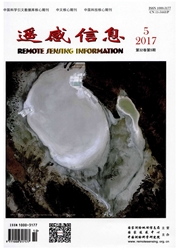

 中文摘要:
中文摘要:
基于特征向量分解和基于散射模型的极化目标分解是全极化SAR非相干分解中的典型算法。本文对比研究了两种算法的特点及分解结果在地物识别分类方面的优势,在基于特征向量分解得到的H-Alpha特征平面的基础之上,引入散射机制判别指数来刻画地物的类别差异,从而能约束H-Alpha平面分割的界限以提高分类的精度,而且利用散射机制占优性强弱可辅助分类结果的解译。实验选取了鄱阳湖地区一景Radarsat-2标准全极化数据,实验结果对比表明一种散射机制占主导的地物,分类精度得到改善,特别是水域、形成二面角的目标区和成片分布的植被区域可以显著地提取出来。
 英文摘要:
英文摘要:
Freeman three components decomposition and cloude decomposition are the classic and sound algorithm among the incoherent target decompositions.Freeman decomposition differentiated three basic scattering mechanisms with the corresponding model backscattering matrix.Cloude decomposition can provide eight kinds of scattering mechanism with H-Alpha plane.This paper introduces the indexes that determine the type of scattering mechanism from the result of Freeman decomposition,and then refine the classification based on the original H-Alpha plane.The experiment selects the standard quad polarization Radarsat-2 data,which covers the Poyang Lake area that contains vegetation,water body,and farmland etc.The test results show that the classification gets improved and especially respect to water,vegetation and boundary formed with two vertical planes.
 关于曾琪明:
关于曾琪明:
 同期刊论文项目
同期刊论文项目
 同项目期刊论文
同项目期刊论文
 期刊信息
期刊信息
